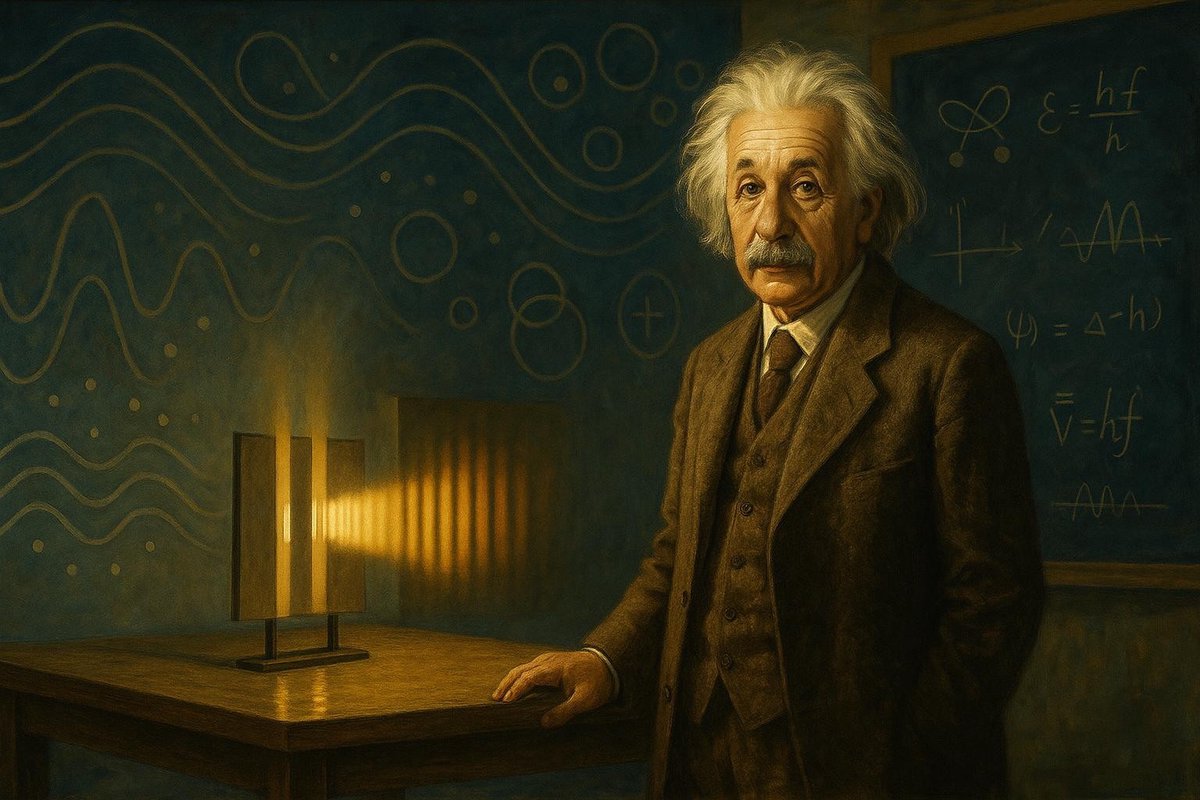
Light — a phenomenon that illuminates not only our physical world but also the corridors of scientific thought. Does the wave-particle duality truly capture the essence of light, or is this just a convenient narrative for our limited understanding? As we unravel this question, it becomes clear that our grasp of light isn’t as straightforward as flipping a switch. Once you dive into the quantum realm, simplicity is often eclipsed by complexity.
The wave-particle duality concept has long helped us explain light’s quirky behavior, but does it reflect the complete reality? To start, picture the everyday miracle of a rainbow — a beautiful illustration of light’s wave nature. But then, consider the photoelectric effect, where light behaves like a stream of particles, ejecting electrons from a metal surface. How can light be both a gentle wave and a particle bombardment? The duality concept attempts to explain this, but let’s dig deeper.
Unpacking the Question
The journey to understanding light’s duality takes us back to the late 19th and early 20th centuries. Before quantum mechanics, light was seen as a wave, beautifully demonstrated by Thomas Young’s double-slit experiment in 1801.
- Young’s experiment: Light shone through two slits produces an interference pattern, suggesting its wave nature.
- Challenges to the wave theory: Late 19th century discoveries showed phenomena light as waves couldn’t explain.
- Enter Einstein: In 1905, Albert Einstein explained the photoelectric effect by proposing that light also behaves like particles, or photons.
Einstein’s insight marked a pivotal moment, challenging classical physics and inviting a new understanding. “It seemed as though a new reality was being revealed,” Einstein reportedly said. Yet, many scientists pondered whether this duality was a genuine property of light or merely a reflection of our theoretical limitations.
Surprising Facts
Quantum mechanics often reads like a detective story, with light at the center of intrigue. The wave-particle duality is both fascinating and baffling, unveiling surprising facts that challenge intuition.
- Double-slit experiment with particles: When particles like electrons are sent one by one through slits, they form an interference pattern. Curious, right?
- Observer effect: When you try to observe which slit the particle goes through, the interference pattern vanishes. Observation alters reality.
- Wavefunction: Schrödinger’s wavefunction concept describes probabilities, not certainties, leading to the ‘superposition’ idea.
Such phenomena paint a picture of nature that defies classical logic. Niels Bohr famously noted, “If quantum mechanics hasn’t profoundly shocked you, you haven’t understood it yet.” These discoveries reveal the duality principle is not just a narrative convenience but a window into a mysterious quantum world.
What Science Says
Wave-particle duality isn’t just a whimsical idea; it’s a cornerstone of quantum mechanics. Scientific consensus acknowledges duality as a fundamental aspect of quantum entities like photons and electrons.
- Quantum field theory: Unites wave and particle views, treating particles as excitations in a field.
- Heisenberg uncertainty principle: Limits precision in measuring complementary properties like position and momentum.
- Copenhagen interpretation: Suggests wavefunction collapse upon measurement, reflecting duality’s probabilistic nature.
However, opinions vary. Some physicists lean towards pilot-wave theories or many-worlds interpretations, which offer alternative views. The wave-particle duality remains central, yet it also acts as a springboard for deeper inquiry. As Richard Feynman remarked, “I think I can safely say that nobody understands quantum mechanics.” Even today, scientists wrestle with its implications, fueling debates and pushing boundaries.
What It Means for Us
The dual nature of light invites us to rethink not just physics, but our worldview. This concept has implications far beyond the lab, influencing philosophy, technology, and our understanding of reality itself.
- Technological impact: Quantum mechanics has paved the way for lasers, semiconductors, and quantum computing.
- Philosophical insights: Challenges notions of determinism and reality, opening dialogues in metaphysics.
- Human curiosity: Encourages inquiry into the nature of existence and our place in the universe.
Wave-particle duality might seem abstract, yet it shapes the devices we use daily and the philosophical questions we ponder. As we unravel its enigmas, we’re reminded of the beauty in not knowing. “The important thing is not to stop questioning. Curiosity has its own reason for existing,” Einstein once advised. This journey fosters humility and inspires us to explore further.
The dual nature of light continues to challenge us, offering glimpses into a universe that resists simplicity. By questioning and exploring, we expand our understanding and appreciation for the wonders of the quantum world.
Fuel Someone Else’s Curiosity
In an age where knowledge is at our fingertips, sharing insights and sparking curiosity is more important than ever. Encourage your friends and fellow thinkers to dive into the world of quantum mechanics. Share this article, discuss it, and let it inspire a new wave of questions and explorations. After all, every great discovery starts with a curious mind.

Leave a Reply